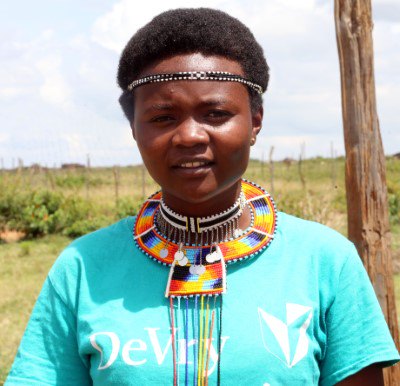

Samburu County is located on the northern part of Kenya within the Great Rift Valley region. Different communities occupy it but the Samburu, a pastoralist community, dominates most parts of the County. Girls in this community undergo Female Genital Mutilation/Cutting (FGM/C) as a rite of passage to womanhood from the tender age of nine years. FGM/C predisposes the girls to Child Early and Forced Marriage (CEFM). These harmful cultural practices deprive girls of development milestones robbing them of their childhood, adolescence and continuity with education curbing their life aspirations and futures. The prevalence of FGM/C and CEFM is 90% and 38% respectively1, which is significantly higher than the national prevalence at 21% for FGM/C and 23% for CEFM2.
The global COVID-19 pandemic lays bare and exacerbates existing inequalities which means that the harmful impacts of gender inequality are magnified. The pandemic, associated lockdowns and indefinite closure of schools have heightened the perpetration of gender-based violence; particularly for the young girls in school being circumcised or being forced into early marriage. Many parents in this community who are still attached to these harmful practices are taking advantage of this pandemic and subjecting their girls through the cut in the silence of the night. However, there are still community end-FGM/CEFM champions who are vigilant and going out of their way to protect the girls. Esther Lororua, a 39-year-old Koota Injena champion, rescued five girls that were set to undergo the cut in April 2020. The girls: Naisherwa* a 12-year old who is in grade six at Wamba DEB Primary School, Naitoti*, Nasieku* and Naramat* (not their real names*) all 15-year-olds in form one at Tipito Girls High School and, Namayan* 13 years who is in grade seven at CCM Primary School.
The evening before the circumcision day, Esther was discussing with Naisherwa’s mother about issues facing women in the community. “Her mother was drunk,” Esther narrated. Naisherwa’s mother revealed the impending circumcision of five girls, including her daughter that was to take place the following day. The woman revealed to Esther her plans to join the other women at a goat eating ceremony (lkitewenet) that evening. This ceremony takes place before a girl is cut. The champion joined her at the ceremony but was on a rescue mission. On reaching the village, Esther gathered information on the houses where the girls were sleeping and escaped with them. She threatened to report the matter to the police if any of the women who saw her rescue the girls uttered a word or followed her into the night.
On reaching home, she stayed with the girls for several days at the same time undertaking discussions with their parents on the effects of FGM/C and CEFM and the need to ensure that girls are allowed to pursue their life goals. “All this time, I kept receiving threats from the girls’ families.” Currently, the five girls are back to their homes with their parents having promised not to subject them to the cut. Esther, with the help of trained Community Health Workers (CHWs), is monitoring the progress of the five girls weekly. “Even though we are currently experiencing the uncertainty of COVID-19 which has restricted interaction, I will be keen with the ongoings in my community and will stand up for the right of every single girl when the need arises.”
The USAID-funded Koota Injena project recently established two temporary rescue shelters in Samburu and Marsabit Counties. The shelters act as a holding space for the rescued girls and provide psychosocial support before successful linkages for medico-legal services. Despite this key milestone, the project requires supplies of dignity kits for the rescued girls, installation of water harvesting equipment and finalisation of plumbing to the water closets (WC). The project also has put in place measures to increase girls’ retention in schools, including the provision of educational materials and dignity packs every school term. There is a need to also advocate for education/curriculum-based learning through community radio, coordinate provision of sanitary products, among others.
Koota Injena is a three-year (2017-2020) USAID-funded proof of concept activity designed to implement and test the effectiveness of engaging clan elders, community leaders, and members, through intergenerational dialogue to strengthen positive youth and male engagement as levers to change norms and behaviours for the abandonment of CEFM, FGM/C and low value of the girl among the 40 clans of Samburu (nine clans), Borana (seventeen clans), Rendille (nine clans) and Gabra (five clans) communities in Samburu and Marsabit Counties.
During a session held at Africa Health Agenda International Conference in Kigali, Rwanda, on 4th…
Amref Health Africa, in collaboration with the Turkana County Department of Health Services, introduced the…
Amref Health Africa, in collaboration with the Turkana County Department of Health Services, introduced the…
Over the past six years, Amref Health Africa has positioned itself as a leading voice…
Africa has made significant strides in advocating for health research and development, yet gaps in…
Thousands of USAID contracts have been cut. African health leaders say the cuts aren't surprising.…